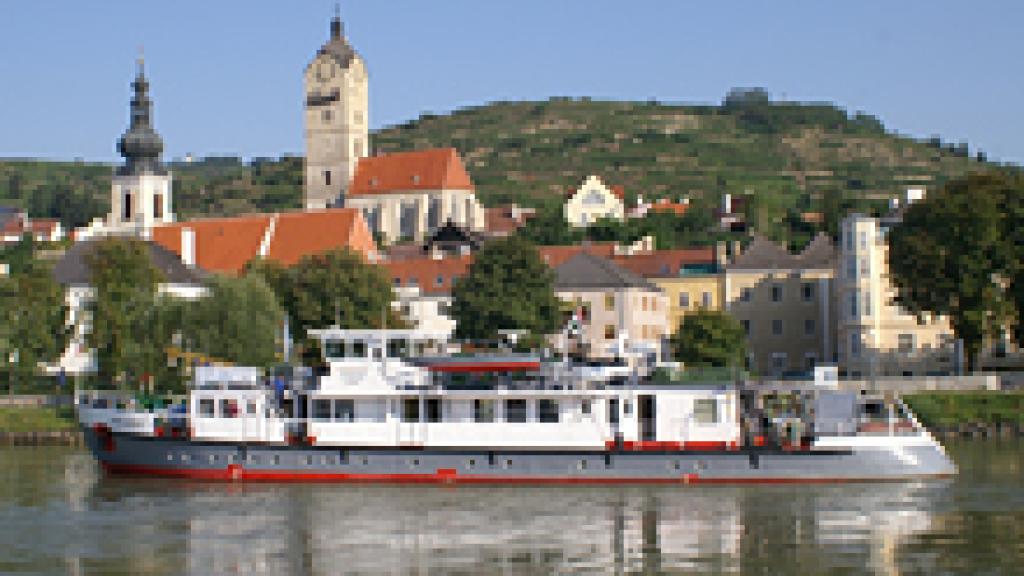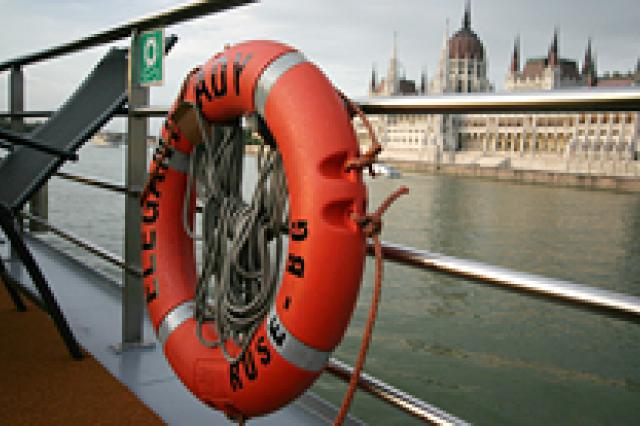Navigation
Historically, the Danube and some of its tributaries have formed important trade routes across Europe. The harnessing of these rivers to facilitate navigation has radically changed their physical and ecological characteristics, while pollution from ships and boats is also a significant problem. In order to address this problem, the ICPDR is undertaking various activities.

Facts and Figures
Ships can navigate the Danube from 2,411 kilometres upstream all the way down to the Delta. This is 87% of the river's total length. The ships can call in at 78 harbours located along the Danube between Kelheim in Germany and the Black Sea in Romania.
The total length of the artificial dredged channels in the Danube Delta is roughly the same as the total length of natural watercourses (1,700 km).
Inland Navigation
Inland navigation can contribute to making transport more environmentally sustainable, particularly where it can act as a substitute for road transport. It can, however, also have significant influence on river ecosystems, jeopardizing the goals of the WFD.
Recognising this potential conflict, the ICPDR initiated in cooperation with the Danube Commission (on Navigation) and the International Commission for the Protection of the Sava River Basin a cross-sectoral discussion process involving all relevant stakeholders and NGOs. This led to the “Joint Statement on Guiding Principles for the Development of Inland Navigation and Environmental Protection in the Danube River Basin” , which was concluded in October 2007 and subsequently agreed by the Commissions involved.
The Joint Statement summarises principles and criteria for environmentally sustainable inland navigation on the Danube and its tributaries, including the maintenance of existing waterways and the development of future waterway infrastructure. These include inter alia the following:
- Establishment of interdisciplinary planning teams, involving key stakeholders, experts from different organisations (governmental and non-governmental) and independent (international) experts to ensure a transparent planning process
- Defining joint planning objectives and goals of IWT as well as river/floodplain ecology
- Ensure flexible funding conditions, enabling integrated planning (including the involvement of all stakeholder groups) and adaptive implementation as well as monitoring
- Monitor the effects of measures and – if relevant – adapt them
Within the framework of yearly meetings, exchange on the experiences with the application of the Joint Statement is shared amongst administrations, stakeholders and environmental groups.
Manuals & Plans for IWT
Furthermore, a “Manual on Good Practices in Sustainable Waterway Planning” was developed in the frame of the EU PLATINA project, which started in 2008 and concluded in early 2012. The manual further outlines practical steps for integrated planning approaches towards sustainable solutions taking into account both, the needs of inland navigation and the environment.
In 2014 a “Fairway Rehabilitation and Maintenance Master Plan for the Danube and its navigable tributaries” was elaborated in the frame of the EU Strategy for the Danube Region. The purpose of the Master Plan is to raise transparency in the area of fairway maintenance in terms of problems, activities undertaken and planned, and to highlight national needs and short term measures in the field of fairway rehabilitation. Further efforts and exchange for the application of the Joint Statement principles will be of particular importance during the practical implementation of the Master Plan.
Several new initiatives and actions involving different actors were launched since the year 2015 to support the process of making inland navigation and transport more environmentally sustainable.
What's Next?
A new initiative to support integrated planning of inland waterways transport was launched in the year 2017. Based on a proposal of the three Directorate Generals of the European Commission – Environment ( DG-ENV), Regional and Urban Policy (DG-REGIO) and Mobility and Transport (DG-MOVE) – a Mixed Environment Transport External Expert Team (METEET) on Integrated Planning of Inland Waterways Transport (IWT) Projects was set up. METEET is designated to assist competent inland waterways transport authorities on a voluntary basis with the objective to foster an integrated approach when developing infrastructural projects in the field of inland navigation.
Joint Statement: Navigation & Environment
In October 2007, a "Joint Statement on Inland Navigation and Environmental Sustainability in the Dan...






